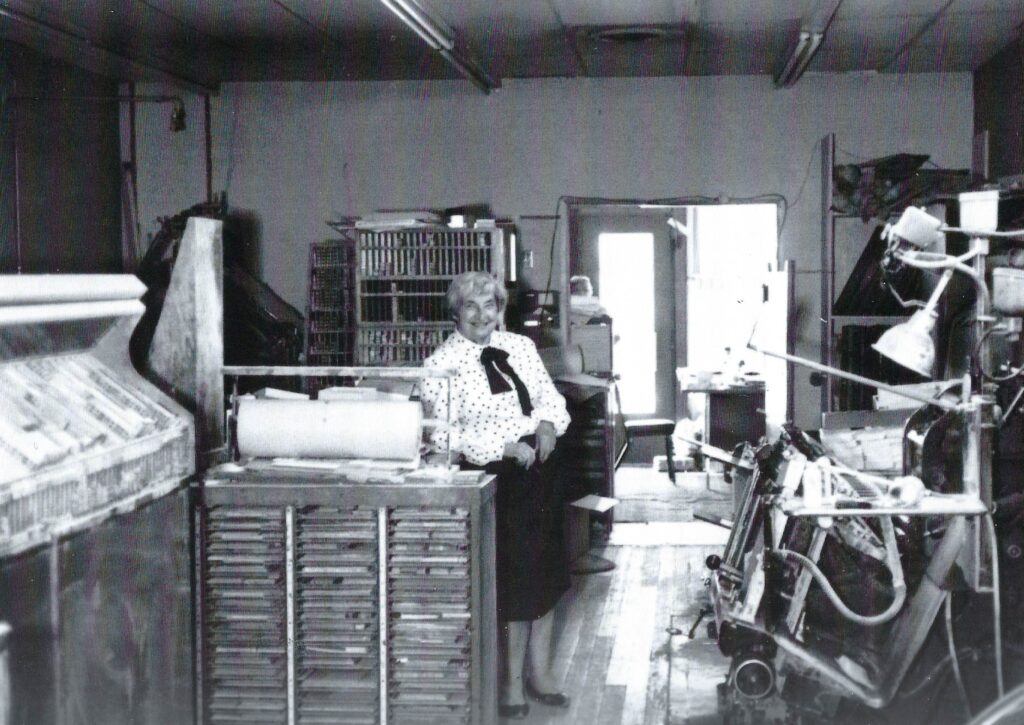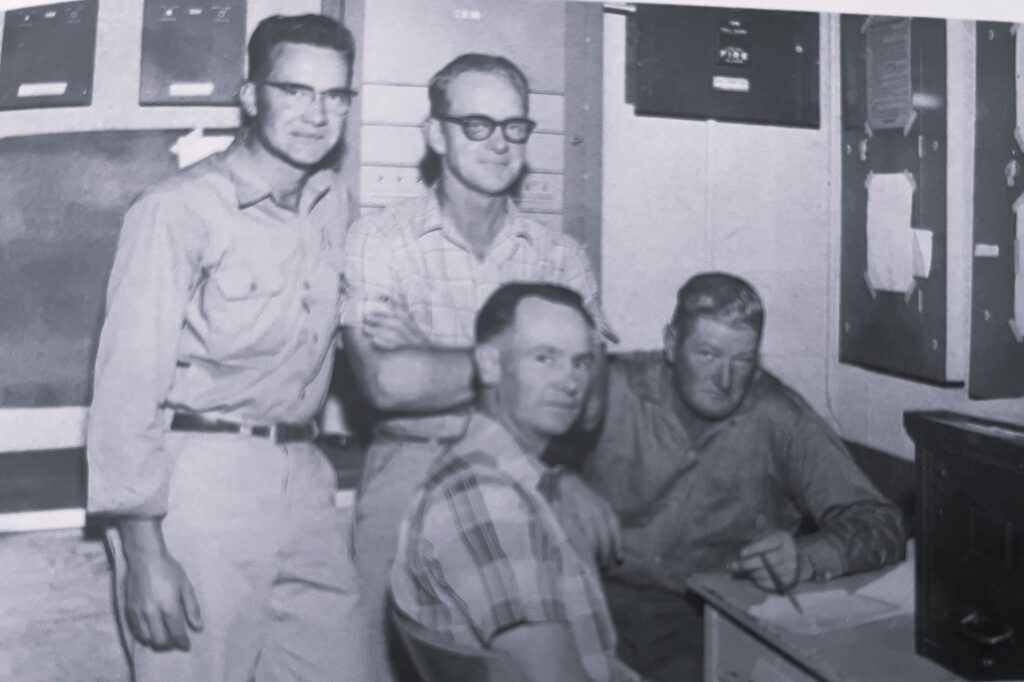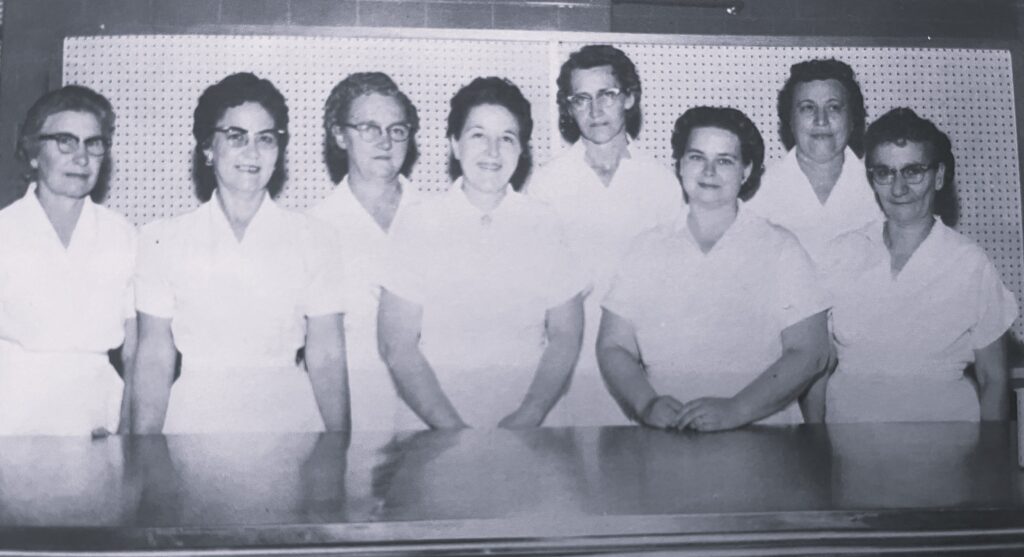Lehi People
Growing up in Lehi and learning to work
Published
2 months agoon
Bill Fowler | Guest Writer
There are so many ways to define work that I couldn’t identify nor describe them all. But hard physical labor has long been admired as a trait praised by everyone. And that type of work came in abundance in Lehi when I grew up. Getting money or food without working was either called a gift or…. theft.
I was taught by example how to mow lawns, hoe weeds, pick fruit, thin beets, buck hay, dig ditches, drive trucks, haul wheat and many more tough tasks as I grew up in Lehi. And what I did was a drop in the bucket compared to the hundreds of hard jobs that had to be accomplished in the daily lives of Lehi’s men and women. Without exception, every boy and girl I grew up with knew how to work hard.
I saw my dad unload fifteen tons of beet pulp pellets from his semi-truck with a scoop shovel every day for years and I used to wonder what effect his dripping sweat had on the quality of the beet pulp.
Praise from dad with an “Atta Boy,” or “Good job Dawson,” from mom always made the completion of a job worth the effort. Pay? Not all of these jobs earned a paycheck. They were done for family gain or survival and mom always said, “Now go mow Grandma Kate’s lawn. You’re not that tired. And do as good a job there as you did here. And see if Mrs. Logsden needs hers done too.”
In truth, I dreaded pushing the hand-mower three blocks to grandma’s house more than I did mowing her lawn. But she always rewarded me with a piece of cake topped with maple frosting. It didn’t matter what kind of cake it was; the frosting was always maple. I can remember the delicious taste even now, many years later.
Dad used to describe many of his friends as hard workers. “If I need to get a tough job done, I’ll call Caesar or George,” he would say. He described “Caesar (Julian Clover) as the hardest worker in Lehi,” Then he would qualify it with, “Well, almost as hard a worker as Alec Christoffersoh, and dang near as strong!”
I remember seeing “Poge” (Glen) Wanlass at his gas station from sun-up to way past sundown and thought he was another tireless worker. Same could be said of Francis Grant, Bill Powell, and Dwight Bates. They ran their stations, paid the bills, pumped the gas, washed the windshields, swept the outside and inside and kept the Coke/Nehi bottle machine full and did mechanical work all the live-long day. They even smiled while doing it (except for Dwight). They also wore a clean mechanic or station shirt and they had to keep the books too.
I remember working at the Lehi Roller Mill where I delivered flour, and saw Sherm Robinson there from before sun-up to long after dark (especially in the summer). Leon Kirkham, Fair Jorgensen and “Robby” were all there too. Those were long days and the work was never-ending and hard. Lifting hundred pound bags of red winter wheat and flour was a chore. And those wheat bins, chutes and storage silos were clean as a whistle.
I worked for Garn Holbrook on the dry farms of Lehi and Cedar Valley and saw that whole family work really hard, especially when the wheat was ready to harvest. Lehi farmers brought in loads of wheat day and night when the combine harvest of late summer demanded that the “cutting window” be completed before monsoon rains took down the sacred crops of wheat. “I shut down at midnight and open at 5 a.m.,” Sherm Robinson told the farmers.
Early one morning I had to get ready for the Utah State FFA Convention in Salt Lake and had to be at the high school at 5 a.m. When I got there, the doors were unlocked, and the cafeteria lights were on. The kitchen was bustling with eight or nine ladies making “sloppy joes” for school lunch. They were Rita Shelton, Mable Cox, Nedra Ball, LaRee Davenport, Alta Hansen, Alene Jones, Adith Southwick, Lucille Miller and Carma Colledge. I remember them all as tireless and sweet ladies who fed 400 students every day. Their work was hard and often unappreciated. I loved those ladies almost as much as the “sloppy joes!”
How about Cliff Bennett riding his bike to and from Kennecott to work every day from Lehi? Sure, folks often threw his bike in the back of their pickup and helped him get home, but many days he made the round trip to and from work on his bicycle. With a dozen kids at home to feed, he couldn’t afford a car or gasoline. “A man’s gotta do what a man’s gotta do,” he would say.
I saw both Lee and Joy Smith irrigating with a shovel in hand together on the ditch-banks of their farm.
I remember seeing Naomi Shaw picking apples in the orchard of her back yard, before heading up to teach students all day. Then, as a young widow, coming home to mow her lawn, weed her flower garden and do the laundry for Frank and Barbara. She was another Lehi woman of tireless working endurance and I never heard one single complaint from her ever.
I once listened to a conversation at the Lehi Diner when Joe Godfrey was proclaimed the “hardest worker” at Geneva Steel. “Joe keeps the blast furnace going all day long,” someone said. “He shovels coal into the face of that beast in 120 degrees and has to drink two gallons of water every shift to match the sweat that falls from his chin. There ain’t a man in the county who could match the hard work of Joe Godfrey.”
I watched the Jacob boys and the Davis family doc sheep until their arms were soaked in blood that ran down their faces with sweat. Unsavory as it sounds, it had to be done each spring.
On my paper route one day, I stood and watched Alma Peterson building a Lehi home with hand tools, an apron full of nails and a table saw. His work was perfect. And he built homes “after” he came home from work. Every home he built still stands square and true. Compression nail guns had not been invented yet. They were called “hammers.” If Alma saw the current prices of those homes he built, he would be amazed!
My dear mom was a typical Lehi working woman. After cooking for a family of eleven, she did laundry in an old-fashioned ringer washing machine, hung out the clothes on a line (who had a dryer?) and ironed shirts, darned socks and worked full-time as the editor of the Lehi Free Press. She loved that job, but came home totally exhausted every day. When dad was alive, she got up at 5 a.m. each morning to make bacon and eggs for dad who often got more work done before the sun came up than some folks did before the sun went down.
Nobody could out-work Lehi High’s custodial crew of Penny Trane, Boyd Holmstead, Art Peterson and Reed Carson. Both inside and out, the high school was clean, well-kept and maintained perfectly. These beloved men put in long hours and took great pride in making LHS always look and run like it was brand new.
Viv Carter, our mailman never missed a day of carrying the mail to hundreds of Lehi homes for many years.
Josephine Cooper was the industrial crane operator at Geneva Steel for 30 years and excelled in a field where she was the only woman crane operator in Utah. Sitting hundreds of feet off the ground in the tiny cab of huge one-hundred-ton crane was a tough job. She was amazing and very well respected by all co-workers as she worked each day, all while raising a family as a young widow.
I was amazed to see Ken Norris, a Cedar Fort lad, but Lehi Pioneer work in Tooele County for 30 plus years then drive into Lehi and coach the “Lehi Giants” football team for 25 years and spend whatever minutes of the day were left promoting rodeo in Utah and beyond for 30 years of his life. Ken was a tireless hard-working man who loved both Lehi and Cedar Fort.
I also recall those amazing ladies at the Lehi Hospital. Ethel Ball and Edith and Laura Strasburg along with Mrs. Dunsden, Clara Clover, Mae Daly, Mrs. Losee and others who put in long hard hours nursing and caring for the people of Lehi every day 24-7.
I wish I could name and describe every single “hard worker” that I knew in Lehi. My Free Press friends don’t have enough print space to list them all, but I wanted to pay tribute to a few that won my admiration and respect long ago. Yes, hard work is still a noble and honorable part of life and certainly has been since Lehi was established in 1850.





